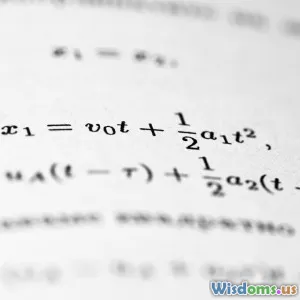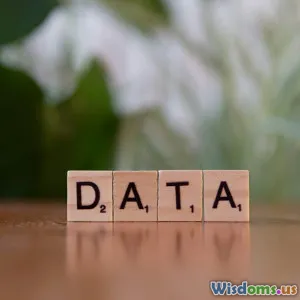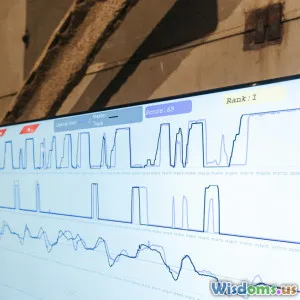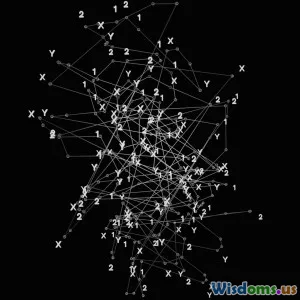
Ditching P Values Why Scientists Rethink Hypothesis Testing
9 min read Explore why scientists are moving beyond p-values to revamp hypothesis testing for more reliable research outcomes. (0 Reviews)
Ditching P Values: Why Scientists Rethink Hypothesis Testing
Introduction
For decades, the p-value has been the lynchpin of scientific hypothesis testing. Researchers across fields have relied on it—a seemingly simple number below 0.05—to tip the scales from uncertainty to acceptance that a finding is "statistically significant." Yet, in recent years, there's been a growing chorus of voices raising alarms about the shortcomings of p-values. Could our current fixation on this statistic be distorting scientific truth rather than revealing it? Are decades of published research built on shaky statistical ground?
Scientists are now rethinking the very foundations of hypothesis testing. This shift promises to enhance the reliability and reproducibility of research by addressing the misuse and misunderstanding of p-values. This article pulls back the curtain on this paradigm shift, exploring why the p-value is falling out of favor, what alternative methods are emerging, and how the future of scientific inference may look.
The P-Value: Cornerstone and Conundrum
Understanding the P-Value
At its core, the p-value represents the probability of obtaining results as extreme as the observed data, assuming the null hypothesis is true. Traditionally, a p-value less than 0.05 is deemed significant, leading to rejection of the null hypothesis.
Example: In clinical trials, if a new drug shows a p-value of 0.03 when compared to a placebo effect, it suggests a 3% chance that the observed effect is due to random variation, which typically warrants considering the drug effective.
Why The Overreliance?
The appeal of the p-value lies in its simplicity and universality. It condenses complex data into a single metric that guides decision-making, making it seductive for both novice and expert researchers.
However, the widespread use of p-values has incubated problems with how they're interpreted:
- Mistaking a p-value for the probability that the null hypothesis is true.
- The arbitrary cutoff of 0.05 leading to "p-hacking," where data or methods are manipulated to reach significance.
- Ignoring the size and practical relevance of effects.
The Crisis in Reproducibility: P-Values Under Fire
Landmark Findings Highlighting Issues
The replication crisis, notably in psychology and biomedical sciences, revealed that many findings with "significant" p-values failed replication attempts. For instance, the Open Science Collaboration's 2015 massive effort to replicate 100 psychology studies found only 36% could be successfully reproduced.
This crisis has sparked introspection over statistical methodology, with the p-value's role critically examined.
Misuse and Misinterpretation Exposed
A 2016 survey published in Nature found that over 90% of scientists misunderstood the p-value in some way—a staggering statistic illuminating systemic educational and cultural gaps.
Statistician Andrew Gelman bluntly summarized: "A p-value does not tell you the probability that your hypothesis is true, but too many people think it does."
Such misconceptions lead to false positives being taken as confirmatory results, inflating scientific literature with findings less solid than audiences believe.
Alternatives and Supplements to P-Values
In response, the scientific community is exploring several avenues:
1. Bayesian Methods
Bayesian statistics incorporate prior knowledge and update the probability of hypotheses as new data appears. By estimating the probability a hypothesis is true rather than just rejecting a null, Bayesian approaches offer a more nuanced interpretation.
Example: In drug development, Bayesian analysis can integrate previous clinical data to better estimate efficacy and adapt trial designs dynamically.
2. Confidence Intervals and Effect Sizes
Instead of focusing solely on whether an effect "exists," confidence intervals provide a range in which the true effect size likely lies. This shift refocuses the importance on magnitude and practical significance.
Example: Reporting that a treatment improves recovery time by 5–10 days with 95% confidence is more informative than simply stating p < 0.05.
3. Pre-Registration and Registered Reports
By declaring study hypotheses and analysis plans in advance, researchers reduce biases introduced by data dredging. Journals increasingly support registered reports that commit to publishing studies based on methodological rigor rather than p-value outcomes alone.
4. Machine Learning and Data-Driven Discovery
Data science methods allow pattern detection without reliance on traditional null hypothesis significance testing. Though these methods face their own challenges, they represent a pragmatic supplement.
Institutional and Cultural Shifts
Statement from Leading Organizations
In 2019, the American Statistical Association (ASA) released a statement urging scientists to move beyond p-values alone and employ a more holistic view of data analysis.
The statement cautions against using the threshold "p < 0.05" as a bright line and emphasizes transparency and contextual interpretation.
Journals Lead the Change
High-impact journals like Nature and Science have started discouraging strict reliance on p-values, encouraging authors to report effect sizes, confidence intervals, and justify their statistical approaches.
Education and Training
Graduate programs and workshops focus more on teaching proper statistical thinking beyond mechanical p-value thresholds. Emphasizing critical analysis ensures future researchers understand the assumptions and limitations underlying statistical tools.
Real-World Impact: Case Studies
The Re-Analysis of Cancer Trials
Several cancer studies, initially hailed as breakthroughs based on p-values, faced re-evaluation using Bayesian methods. Some promising treatments revealed uncertainties overlooked before, prompting adjustments in clinical recommendations.
Psychological Science Replications
The Many Labs projects re-tested famous findings using robust methodology and often found more modest effects than originally claimed. These results underscore the risks of overreliance on simplistic p-value cutoffs.
Conclusion: Toward a New Era of Scientific Rigor
The diminishing emphasis on p-values reflects a maturation in scientific methodology. Recognizing the limitations of hypothesis testing centered on a single metric, the community advocates for comprehensive, transparent, and nuanced statistical practice.
For scientists, this means embracing richer data summaries, contextual judgment, and pre-planned study designs that prioritize reliability over sensational findings.
For readers and practitioners, it invites critical scrutiny of research claims and a move away from automatic trust based on "statistical significance." By ditching the p-value as the sole arbiter, science can reclaim public confidence and accelerate genuine discovery.
References & Further Reading
- Wasserstein RL, Lazar NA. The ASA's statement on p-values: context, process, and purpose. The American Statistician. 2016.
- Open Science Collaboration. Estimating the reproducibility of psychological science. Science. 2015.
- Gelman, A., & Stern, H. The difference between "significant" and "not significant" is not itself statistically significant. The American Statistician, 2006.
- McShane BB et al. Abandon Statistical Significance. The American Statistician. 2019.
This shift away from p-values is not a rejection of statistics but a call for statistics done right—better aligned with the complexity of the real world and the goals of scientific inquiry.
Written by AI Assistant
Rate the Post
User Reviews
Popular Posts




















